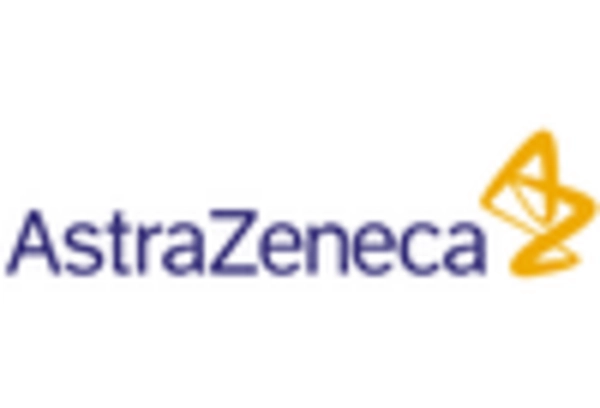Increased Awareness and Education
Growing awareness and education regarding mental health issues are pivotal in shaping the neuropsychiatric disorders-treatment market. Campaigns aimed at destigmatizing mental health conditions have led to more individuals seeking help, thereby increasing the demand for treatment services. Educational initiatives in South America have resulted in a notable rise in the number of people recognizing symptoms and understanding the importance of early intervention. This heightened awareness is likely to propel the neuropsychiatric disorders-treatment market forward, as healthcare providers expand their services to accommodate the influx of patients. Moreover, the integration of mental health education into school curricula is fostering a more informed population, which may further influence treatment-seeking behavior.
Government Initiatives and Funding
Government initiatives aimed at improving mental health services are a significant driver for the neuropsychiatric disorders-treatment market. In South America, various governments are increasing funding for mental health programs, recognizing the need for comprehensive care. This includes investments in public health campaigns, training for healthcare professionals, and the establishment of mental health facilities. The neuropsychiatric disorders-treatment market benefits from these initiatives as they enhance service availability and accessibility. For example, recent policy changes have allocated millions of dollars to support mental health infrastructure, which is expected to improve treatment outcomes and reduce the burden of neuropsychiatric disorders on society.
Integration of Technology in Treatment
The integration of technology into treatment modalities is transforming the neuropsychiatric disorders-treatment market. Digital health solutions, including mobile applications and online therapy platforms, are becoming increasingly popular in South America. These technologies facilitate access to care, particularly in remote areas where traditional services may be limited. The neuropsychiatric disorders-treatment market is adapting to this trend by incorporating teletherapy and digital monitoring tools into treatment plans. This shift not only enhances patient engagement but also allows for more personalized care. As technology continues to evolve, it is likely to play a crucial role in shaping the future landscape of mental health treatment.
Advancements in Pharmaceutical Research
Innovations in pharmaceutical research are significantly influencing the neuropsychiatric disorders-treatment market. The development of novel drugs and therapies, particularly those targeting specific neurotransmitter systems, is enhancing treatment efficacy. For instance, recent breakthroughs in the understanding of neurobiology have led to the creation of medications that offer improved outcomes for patients with treatment-resistant conditions. The neuropsychiatric disorders-treatment market is witnessing a shift towards personalized medicine, where treatments are tailored to individual genetic profiles. This trend not only improves patient outcomes but also drives market growth, as pharmaceutical companies invest heavily in research and development, with expenditures reaching billions of dollars annually.
Rising Prevalence of Neuropsychiatric Disorders
The increasing incidence of neuropsychiatric disorders in South America is a critical driver for the neuropsychiatric disorders-treatment market. Reports indicate that conditions such as depression, anxiety, and schizophrenia are becoming more prevalent, affecting approximately 20% of the population in some regions. This rise necessitates enhanced treatment options and services, leading to a surge in demand for innovative therapies and medications. The neuropsychiatric disorders-treatment market is responding to this challenge by developing targeted treatments and expanding access to care. Furthermore, the economic burden associated with these disorders, estimated to exceed $200 billion annually in South America, underscores the urgency for effective interventions and support systems.


















Leave a Comment